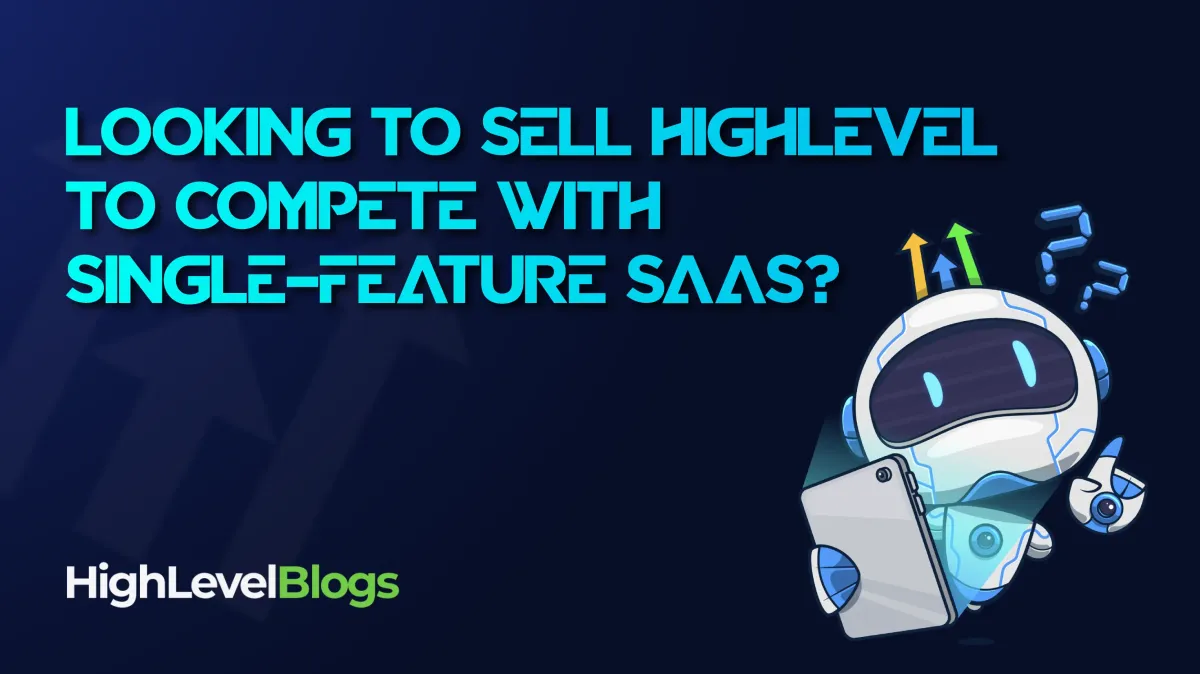
How to Price and Package Your SaaS Offering
If you’re launching a SaaS business - or productizing HighLevel into one - your pricing strategy is your positioning. Get it wrong, and you’ll either stall growth or erode margins. Get it right, and you create a clear, scalable path to revenue.
This guide breaks down the core pricing models, how to position each effectively, and how to use HighLevel to support flexible, competitive packaging strategies.
The Three Primary Pricing Models
Before diving into tactics, here’s the high-level pricing spectrum most agencies and SaaS creators work with:
1. All-In-One, Unlimited Access at $97 - $497+
This model is ideal when you’re competing directly with bundled platforms or appealing to high-intent buyers who want the “whole system” up front. It includes access to most or all features (email, CRM, calendars, funnels, automation, etc.) and scales based on usage, contacts, or support tier.
When to use it:
You’re targeting agencies or pros who are migrating from a patchwork of tools
You can clearly demonstrate ROI from the full stack
You want higher initial contract value
2. Feature-Based SaaS (Sell One Tool at a Time)
This is where the single-feature model shines.
If your prospect is shopping for one specific tool - like email automation, booking software, or a funnel builder - leading with the full suite can be a barrier. Instead, meet them where they are.
This model lets you:
Compete directly with single-feature tools like ActiveCampaign, Calendly, Podium, ClickFunnels, and Typeform
Use HighLevel’s SaaS Configurator to create standalone offers (only available at the $497/mo plan level)Start small and build toward premium plans as clients grow
For example:
Email Starter → $29/month (Competes with ActiveCampaign)
Funnel Builder → $49/month (Competes with ClickFunnels)
Calendar Solo → $19/month (Competes with Calendly)
Each plan becomes a gateway into your ecosystem. Start with what they need today, then upsell additional features or bundled packages as trust and results grow.
3. Usage-Based or Tiered Plans
This is a hybrid approach where pricing increases based on:
Number of contacts
Number of users or seats
Campaigns or workflows activated
Data volume or support level
It’s a natural complement to both all-in-one and feature-based models, especially if you want to encourage plan upgrades without bundling new features.
For example, you could offer:
Starter → 1 user, 1,000 contacts
Growth → 3 users, 5,000 contacts
Scale → 10 users, 25,000 contacts + advanced automations
This approach aligns with what tools like HubSpot, Kajabi, and even ActiveCampaign already do - positioning your offer as both familiar and flexible.
Why Start Small? The Power of Packaging Progression
Not every buyer is ready for the “everything platform” from day one. The beauty of HighLevel lies in its modular design - you can start with a sliver of functionality and grow into a system.
By packaging your offering with intentional pricing models:
You lower friction for first-time users
You tailor the experience to their current stage of business
You create predictable, scalable upsell opportunities
This is how you transform a $29 signup into a $497/month power user - ever having to “re-sell” the whole thing.

